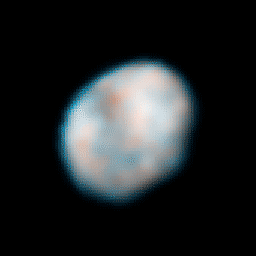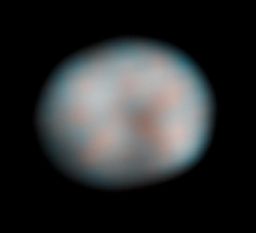Emily Lakdawalla • Oct 08, 2010
New Hubble images and rotation movie of Vesta
NASA just press-released some recent new views of Vesta, one of the largest denizens of the asteroid belt, soon to be visited by the Dawn spacecraft. The movies were taken in short wavelengths (ultraviolet and blue) by Hubble's relatively new camera, the Wide Field and Planetary Camera 3. The movie is terrific; it really gives a sense of the asteroid's shape. Is it me, or is there a really big, deep crater on the equator? Or is it just an especially dark patch of material?
redit: NASA / ESA / STScI / UMd
stronomers combined 146 exposures taken by NASA's Hubble Space Telescope to make this 73-frame movie of the asteroid Vesta's rotation. Vesta completes a rotation every 5.34 hours. The images were taken in near-ultraviolet and blue wavelengths, so the movie is not representative of what the human eye would see. Dark areas are interpreted to be regions of basalt; red areas are likely "regolith" or dust. The observations were made on February 25 and 28, 2010.
Here's a still from the same set of observations:

NASA, ESA, and Lucy McFadden (U. Maryland)
Rotating Vesta
This animation is composed of 20 images of Vesta captured on May 14 and 16, 2007 by the Wide Field Planetary Camera 2. Vesta has a mean diameter of approximately 530 kilometers (330 miles), but is slightly shorter pole-to-pole (464 km / 288 mi) than it is at the equator (570 km / 354 mi) and rotates in 5.34 hours. The colors are not true colors but do show color variations across the surface.The research on these images was published in Icarus in July by Jian-Yang Li et al.: "Photometric mapping of Asteroid (4) Vesta's southern hemisphere with Hubble Space Telescope". I'm sure I could find the answer to my question about that equatorial dark patch in this paper -- but don't have time to read it just now, unfortunately.
The Time is Now.
As a Planetary Defender, you’re part of our mission to decrease the risk of Earth being hit by an asteroid or comet.
Donate Today

 Explore Worlds
Explore Worlds Find Life
Find Life Defend Earth
Defend Earth


